I’ve been negligent in not investigating the Christensen Arms Ridgeline FFT rifle sooner. Though it’s not new for 2024, I'm reviewing it here because after my first serious look at this rifle, I'm convinced that you’re going to want to know more about it. Christensen Arms has been around since 1995, and they were the first to offer carbon-fiber wrapped barrels. Over the last 30 years, they’ve perfected that process and are now using even more advanced carbon-fiber know-how to produce rifle stocks with Flash Forged Technology (FFT). The result is a tough and rugged stock that weighs only about 20 ounces. Combine that with a carbon-fiber wrapped-barrel, and you end up with the incredibly lightweight yet great-shooting Ridgeline FFT. I visited the Christensen factory recently and brought home a test rifle to put through the wringer on my home range. Here is how it fared.
Christensen Arms Ridgeline FFT Specs

Length: 38 to 44 inches without muzzle brake and depending on chambering
Weight: 5.45 pounds (as tested)
Barrel: 16 to 24 inches depending on chambering, with threaded muzzle, brake, and thread protector. (20 inches, as tested)
Action: Christensen Arms Model 14, bolt action, two-lug
Trigger: TriggerTech adjustable, 2.25 pounds (as tested)
Capacity: 3+1
Finish: Cerakote
Stock: Christensen Carbon Fiber FFT
Available Chamberings: 22-250 Rem., 243 Win., 6mm Creedmoor, 6.5 Creedmoor, 6.5-284 Norma, 6.5 PRC (tested), 270 Win., 6.8 Western, 7mm-08 Rem., 280 Ackley, 7mm Rem. Mag., 7mm PRC, 28 Nosler, 308 Win., 30-06 Springfield, 300 WSM, 300 Win. Mag., 300 RUM, 300 PRC
Price: $2,050
Christensen Arms Ridgeline FFT Overview
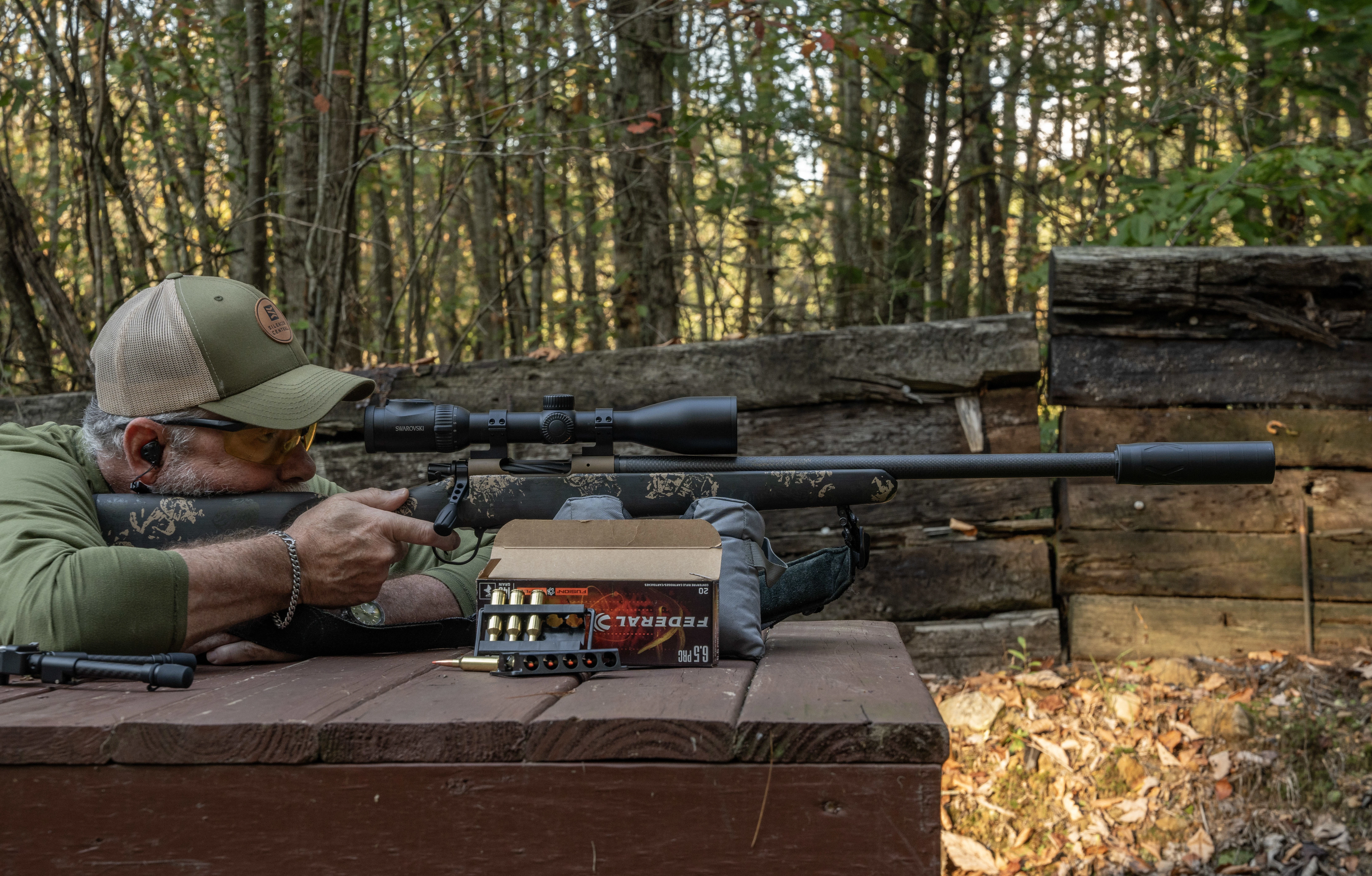
The Ridgeline FFT rifle is built on the Model 14 action, which is somewhat similar to the Remington 700 action in that it has a two-lug bolt and the same footprint, so will also accept Remington 700 scope mounts. But that’s where the similarities end. The Christensen Arms action has a redesigned bolt release mounted on the left side of the action, as well as an enlarged ejection port. The bolt itself has spiral fluting and uses a M16-like extractor and dual plunger ejectors. The bolt handle is skeletonized, the knob is grooved and oversized, and the bolt glides inside the action with melted-butter smoothness. Finish options include stainless, burnt bronze, or black Cerakote.
Barrel length varies from 16 to 24 inches, depending on the cartridge, and I got to witness them being made with a process that is unique and highly guarded. The 416R stainless-steel barrel is button rifled and hand lapped. It's stepped toward its center, and finally wrapped in a proprietary process with various layers of carbon fiber. The muzzle is threaded and the rifle ships with a thread protector. I had the test rifle chambered in 6.5 PRC and fitted with a 20-inch barrel with a 1 in 8 rifling twist rate.
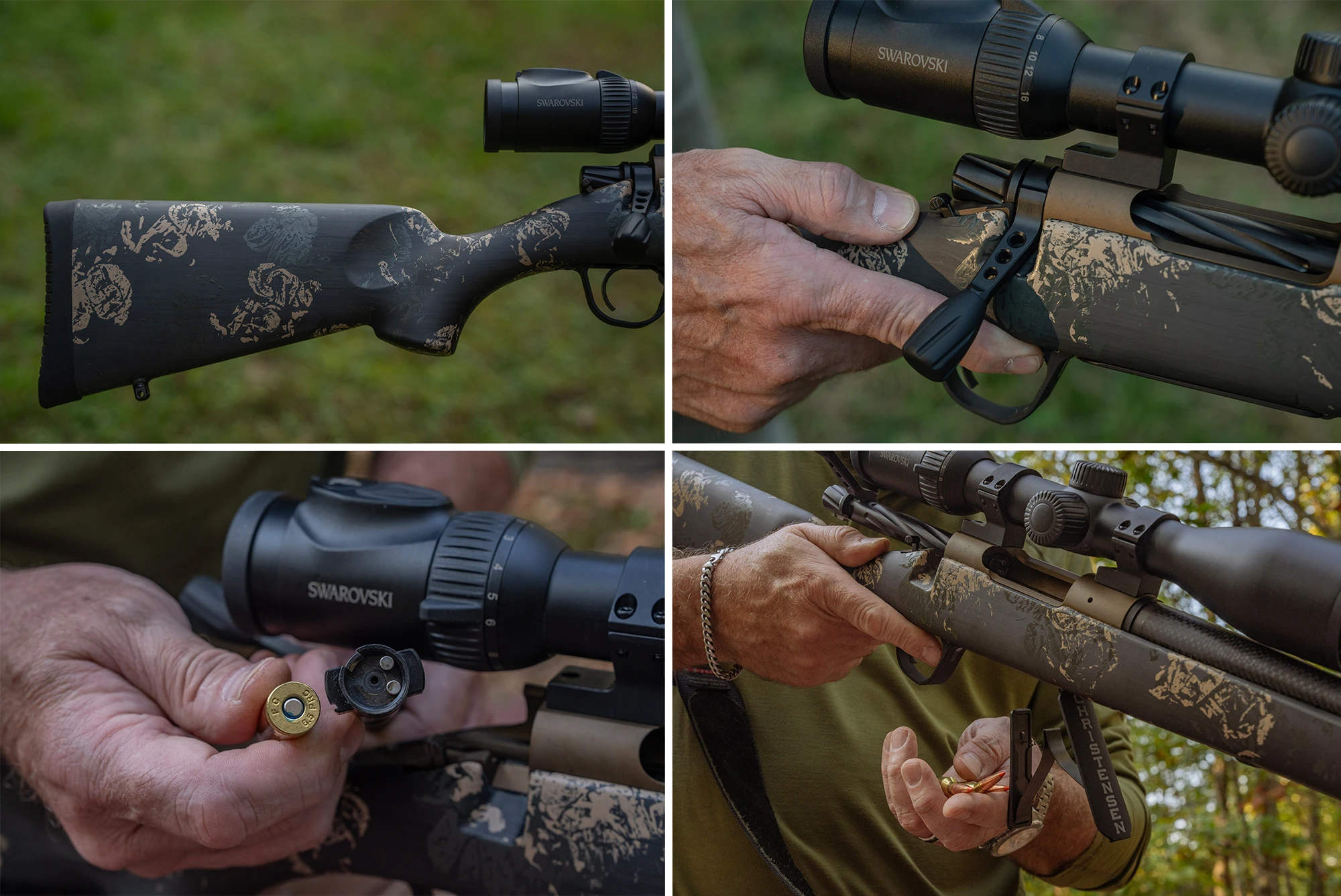
The Flash Forged Technology sporter-contoured stock was impressive. At less than 20 ounces with the recoil pad attached, it is incredibly light for a rifle stock and only two ounces heavier than the fantastic stocks Melvin Forbes created for his New Ultra Light Arms rifles. Christensen Arms handcrafts these stocks in house, and it is a monocoque design, meaning there’s no need for internal structuring support like bedding blocks or rails. In a way, it’s like an eggshell but a hell of a lot stronger. However, the stock does contain carbon-fiber bedding pillars for the action screws, and the action is glass bedded at the recoil lug to facilitate a free-floating barrel, and two sling swivel studs are present in the usual locations.
Other features of the Ridgeline FFT include a stainless-steel, side-baffle muzzle brake that comes installed on the rifle. There’s also a TriggerTech trigger that’s user adjustable, and the rifle comes with a hinged aluminum floor plate but is compatible with aftermarket AICS detachable magazine conversion kits. Christensen Arms offers a sub-MOA accuracy guarantee with every Ridgeline FFT rifle.
Christensen Arms Ridgeline FFT Test Results
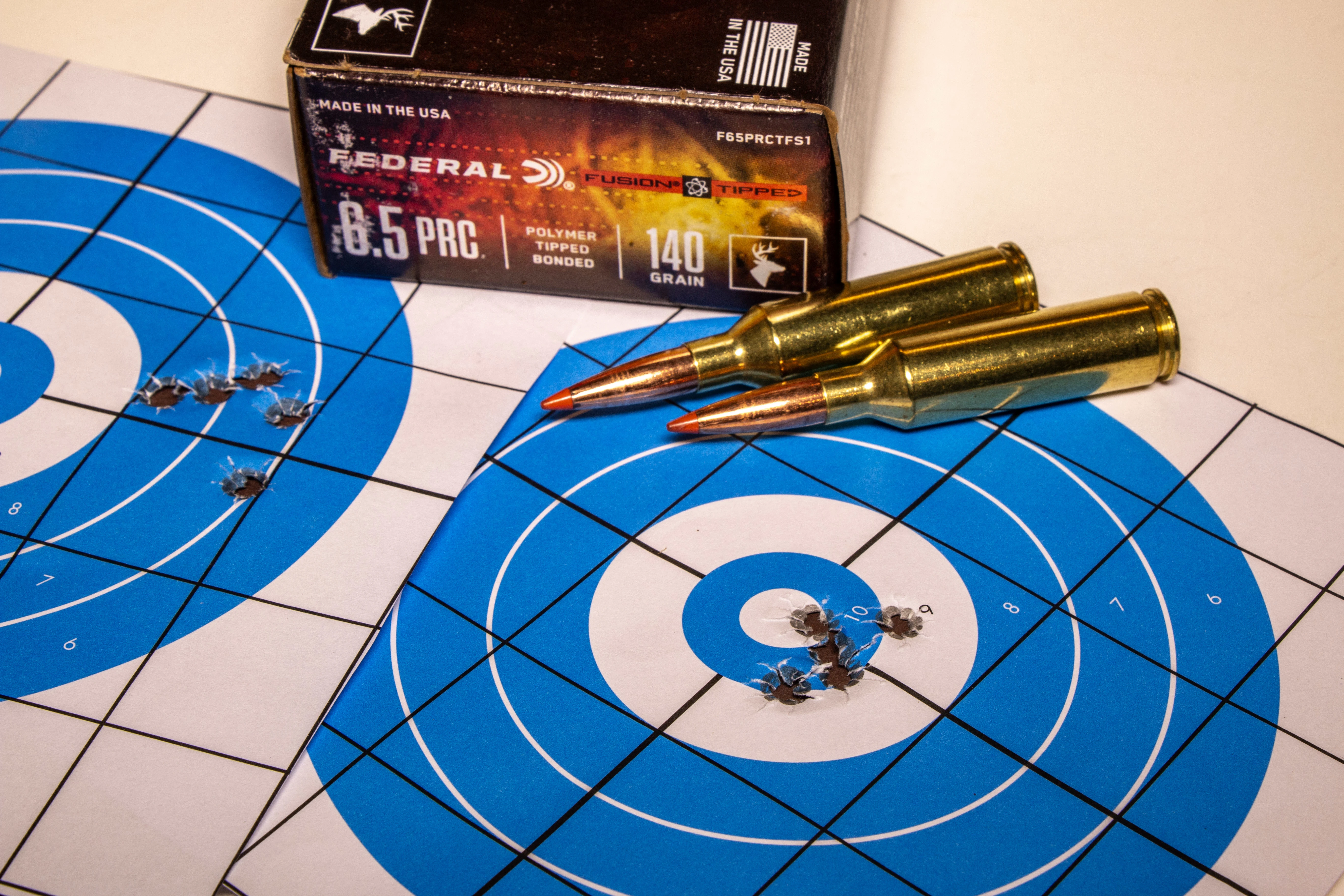
I helped put the test rifle together during my visit to Christensen Arms. Mostly, I just screwed parts together, and I was a bit worried I might have not done even that correctly. However, the target told a different story. My first three-shot group from this rifle using Berger’s 156-grain Elite Hunter load was only 0.56 inches. The next day I put the rifle to work on a 1,000-yard range and rang steel out to the maximum distance with ease. Christensen Arms shipped the rifle to my home so I could further evaluate it, and the average precision for nine, five-shot groups with three different loads on my range was only 0.86-inch. This rifle will shoot!
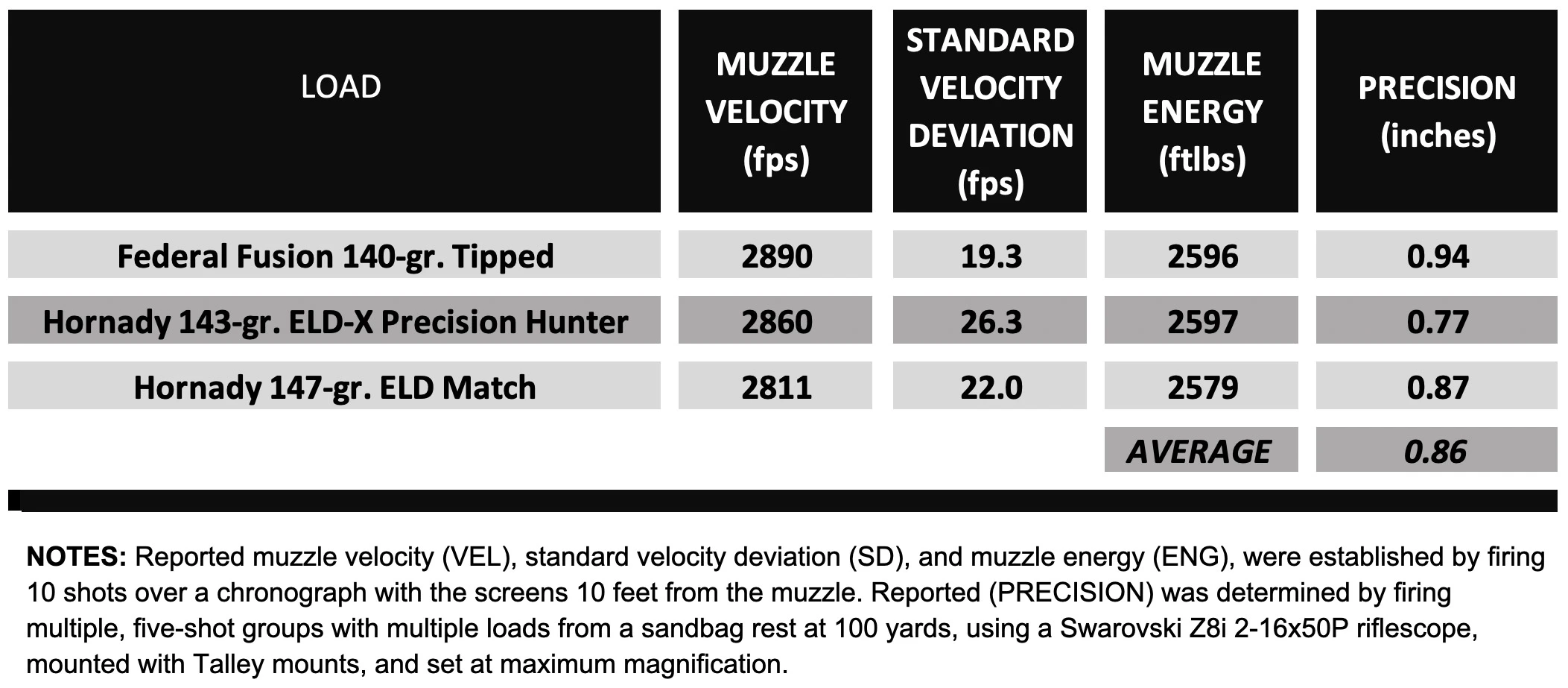
Feeding and functioning were flawless, and the rifle’s trigger was very good with only a minute amount of over travel. It broke very clean at only 2.25 pounds. (I set the pull weight when I assembled the rifle at the factory in Utah.) The safety, which is integral to the trigger mechanism, was my only complaint; it will not lock the bolt handle down. This is a feature I really appreciate on a bolt-action rifle, especially one with a large bolt handle like is on the Ridgeline that you can easily bump partially open. It’s something that if corrected, I think would make this one of the best bolt-action rifles currently manufactured.
I’ve shot this rifle a good bit, partly because I enjoy shooting rifles that shoot this well, but also because I currently do not own a 6.5 PRC and am seriously considering buying this one. From the bench, it clearly shoots better than I can, and during off-hand shooting drills out to around 200 yards, it also performed well, partially because of the good interface with the stock and the trigger. The rifle’s balance was also close to ideal, but it was a tad muzzle heavy with the Silencer Central Backcountry suppressor installed. The 23.8 ounce Swarovski Z8i riflescope I used for testing sort of defeats the purpose of a lightweight rifle, so I also did some shooting with Swarovski’s 12.7 ounce Z3 3-10x42 riflescope, which was a much better fit for this lightweight and nimble rifle. Both were mounted in low Talley one-piece, two-ounce, scope mounts to keep weight down as much as possible.
Final Thoughts on the Christensen Arms Ridgeline FFT
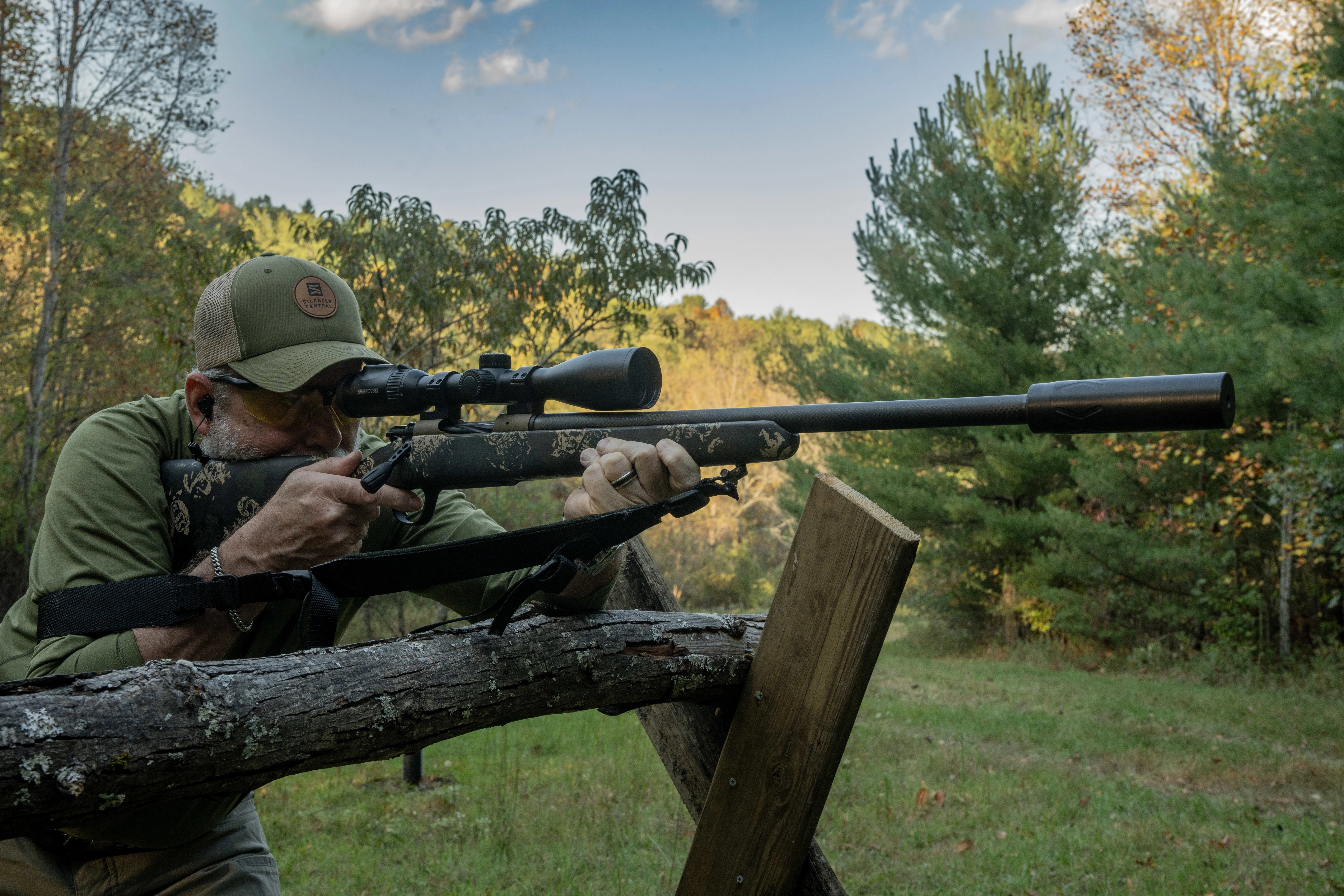
Pros
Incredibly lightweight
Great trigger
Outstanding precision
Cons
Safety does not lock bolt
Let’s start with what I didn’t like about the Ridgeline FFT. I took the muzzle brake off and tossed it aside because I deplore them and I’m not going to buy a rifle if I cannot manage the recoil. If, however, you like muzzle brakes, you’ll like this one, as it substantially reduces recoil but is as loud as the splitting of an atom. I also do not like a bolt-action rifle where the safety does not lock the bolt handle down in the “safe” position. For range work, this is not a big deal, but in the field—especially with a large bolt handle like on the Ridgeline FFT—it can be a problem.
Other than that, I was very impressed. What struck me most was how lightweight the rifle was and how well it balanced. It’s easy to make a lightweight rifle or a well-balanced rifle. It’s not that easy to make a rifle that’s both. It’s also relatively easy to make a great shooting rifle, but it is hard as hell to make a great-shooting 5.4-pound 6.5 PRC rifle that’s also well-balanced. Not a single five-shot group I fired measured more than an inch. I’m not saying this rifle will shoot that well with every 6.5 PRC load, or that every Ridgeline FFT will shoot as impressively. But in my book, this is a true sub-MOA rifle. I was also impressed by the rifle’s fit-and-finish, flawless operation, and the fact that you have 20 different cartridges to choose from. The Ridgeline FFT is clearly one of the best modern lightweight bolt-action rifles currently offered, and with a suggested price of around $2,000, it's a fair value too. I’m a bit embarrassed I overlooked it for so long. I’d suggest you don’t.


